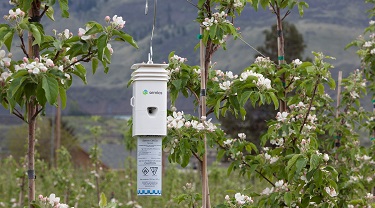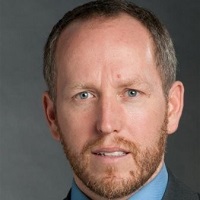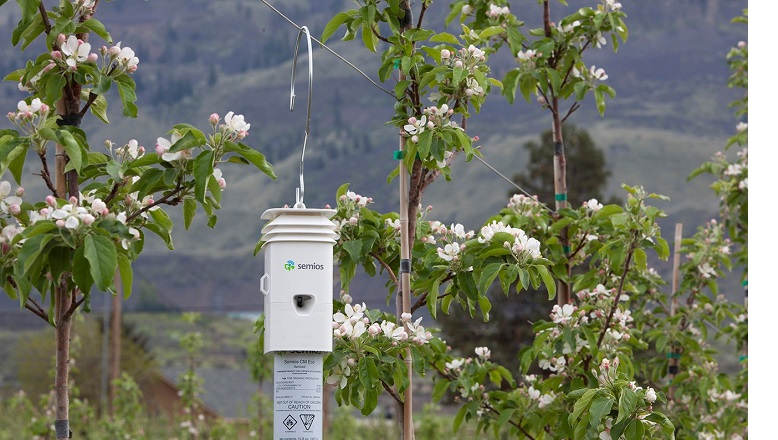When I was doing my graduate studies in natural product chemistry, I was struck by the elegance with which nature solves problems as opposed to the brute force humans tend to use. Crop development and protection are good examples where mankind often takes a sledgehammer approach—effective, but ugly. Nature, by contrast, seems to do things with very few side effects.
Finding and implementing natural solutions will become increasingly important to solving the challenge of feeding the world’s quickly growing population. Figuring out ways to help double the world’s agricultural production by 2050 to feed a population of more than nine billion people is a big, complex problem. But I like solving big, complex problems. That mission is what has helped drive our success at Semios.
Communication breakdown
Semios is a Greek word that means communication and communication involves everything we do. Our customers are growers of high-value crops that grow on trees and vines such as pistachios, almonds, apples and grapes. When we started the company, we were looking for opportunities to improve the delivery and adoption of a class of chemicals new to the agriculture industry called pheromones. We use pheromones to integrate into the communication paths of insects whose survival depends on destroying a crop. Pheromones disrupt their mating activity and thus prevent insect damage to the crops, while allowing growers to avoid a sledgehammer pesticide approach.
Communication is also the purpose of our proprietary network monitoring system for orchards. Everything in agriculture—every risk and every upside—is directly connected to some combination of two primary inputs: heat and water. Our wireless platform monitors and measures those two inputs on every acre, every 10 minutes on all of the farms where we have the platform installed. To improve yield, growers use our data analysis to optimize water management, monitor weather-related risks and assess and respond to insect, disease and plant health conditions in real time.
After the success we have had with big growers in the western United States, Semios is poised to move into other geographies. Here are a few of the lessons we learned along the way.
1. Getting five bars in the orchard
Our wireless network includes over a million sensors, well ahead of our closest competitor. But figuring out how to solve the problem of making that network function turned out to be our biggest challenge and one we didn’t really foresee. It took more than three years to solve.
It turns out that water is one of the most difficult mediums through which to communicate with a wireless signal. An orchard, full of water contained in all the leaves, fruit and other biomass, is a terrible environment for wireless communication. You’d likely have more difficulty trying to get a signal on your cellphone standing behind an apple tree than a skyscraper. The problem was complicated by not having a power source in the field. When we finally solved it and filed our patents, our business took off. We’re now leaps and bounds ahead of our competitors because we figured out how to wirelessly communicate through biomass in a cost- and energy-effective way.
Without EDC’s support, we would be limited to smaller suppliers, which means we would have a slower growth rate.
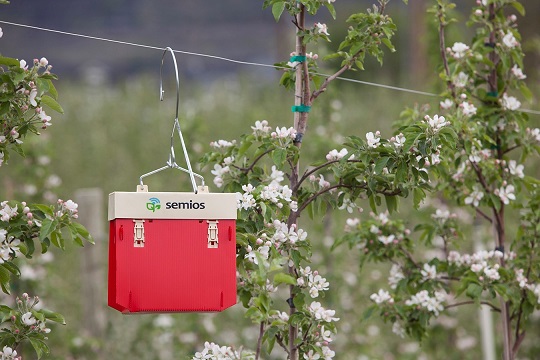
2. Big customers, big challenges
Once we solved these problems, we knew we wanted to go after the biggest and most valuable customers first. In our case, that meant the juggernaut growers in California and the state of Washington. Some cleantech small- to medium-sized enterprises (SMEs) may find it intuitive to go after local customers first. After all, they’re closer and that may make them seem easier to manage. However, my experience has been that sometimes when you pursue smaller local customers, you aren’t necessarily learning about the biggest pain points in the industry. We went after big growers in the U.S. because we felt we could learn from them a lot faster and develop a high value-added service much more quickly than we could starting at home.
Now that we’ve solidified our products and services in the U.S., we’re ready to expand further into the Canadian market.
3. The right business model
One of the lessons we’ve learned on our journey is that having great technology alone isn’t enough to be a successful cleantech company. I think this is true of many cleantech SMEs that may have built a better mousetrap, but become too focused on that at the expense of thinking about a business model that will disrupt the industry.
In the area of agricultural technology, for example, most companies tend to fall in one of three areas:
- chemical companies that deliver things like fertilizer or crop protection products;
- software companies that deliver a software platform for growers; or
- hardware companies that provide things such as a weather station or sensor.
Semios delivers a service that includes all three. But our business model is most disruptive in the hardware space. We provide our platform to growers on a software-as-a-service (SaaS) basis rather than making them purchase the equipment outright. The pace of technological change with agricultural equipment today is so fast that a grower takes a considerable risk with the purchase of any new gizmo—it may become obsolete quickly or break or not work and the grower may be unable or even prevented from repairing it. By contrast, the SaaS model greatly de-risks the purchase decision for the grower.
Of course, delivering our platform as a service means we have to fully finance the production run for our equipment first. Export Development Canada (EDC) has helped us meet those financial challenges by providing payment guarantees to our suppliers. That has allowed us to put in bigger orders with higher-tiered manufacturers and achieve more growth. Overall, the SaaS business model has been trickier for us to finance, but growth has come so much faster by removing the technology risk for our customers.
4. Communication within the company
Beyond our products and service, the theme of communication also permeates through the management of our company. We’re a small company, but our employees are spread out across a big geography. To make sure that everyone’s on the same page, knows what they’re doing and why they’re doing it, we have adopted several of the Rockefeller Habits as part of our strategy implementation system. Every day, everyone meets in morning huddles with their managers for up to ten minutes to discuss wins, roadblocks and what we’re trying to get done that day. That trickles up until I meet with my managers and then by 10 a.m. each day, I have heard what’s happening across the entire company. Those morning huddles are a focal point in every employee’s day and are important for making sure we’re all rowing in the same direction.
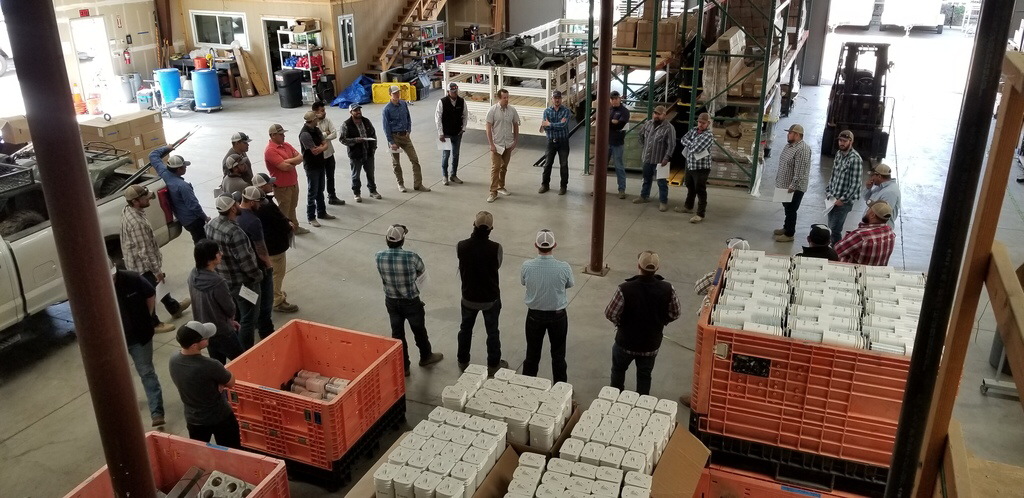
Feeding the world
The challenge of feeding the world’s population is only getting greater. With all the best arable land already in use, agriculture will get pushed up the slopes into drier or less arable land, where it’ll be more difficult to produce food with the same efficacy as today. At the same time, farms are becoming bigger and more complex while agricultural labour is becoming scarcer. The need for automated technology in agriculture—technology that solves problems with precision, accuracy and nature’s elegance rather than mankind’s sledgehammer—will only grow.
Canadian cleantech companies that can provide solutions for these challenges in ways that disrupt current business models will be well-positioned for growth in international markets for years to come.
How EDC helped
Given the seasonality of our business, Semios does one big production run a year. To do that, we need the big suppliers. Without EDC’s support, we would be limited to smaller suppliers, which means we would have a slower growth rate. Through their Export Guarantee Program, we’ve been able to access the working capital we needed to grow our business and expand into new markets.
